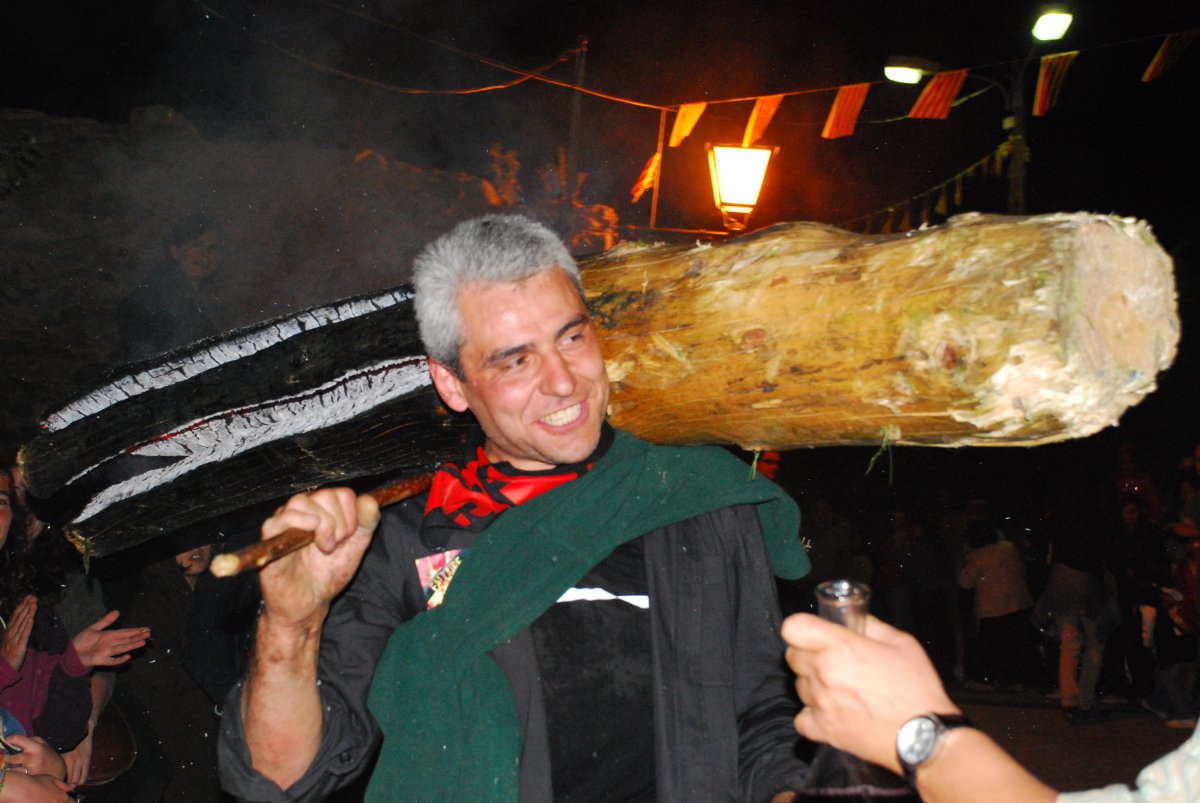'The torches of the Pyrenees', UNESCO element of Intangible Cultural Heritage of Humanity
Although the candidature was presented by the Andorran government, there are Catalan, Spanish and French villages amongst the 63 municipalities from the Pyrenees which share the celebration of this festival. In fact its transversal nature was one of the most valuable points of the candidature, according to UNESCO's committee. On the night of the summer solstice, people carry flaming torches from the mountains to light traditionally constructed beacons. The descent is a special moment for young people, signifying the transition from adolescence to adulthood but also a time for regenerating social ties and strengthening feelings of belonging and identity. In 2010 UNESCO recognised another Catalan tradition, Catalan human towers, as one of the most genuine and unique cultural practices in Europe.

Barcelona (CNA).- The summer solstice fire festivals in the Pyrenees' candidature was presented by the Andorran government but there are also Catalan, Spanish and French villages amongst the 63 municipalities which celebrate this festival.In fact, its transversal nature was one of the most valuable points of the candidature, according to UNESCO's committee. On the night of the summer solstice, people carry flaming torches from the mountains to light traditionally constructed beacons. The descent is a special moment for young people, signifying the transition from adolescence to adulthood. It is also considered a time for regenerating social ties and strengthening feelings of belonging, identity and continuity with celebrations including popular folklore and communal dining. In 2010 the UNESCO recognised another Catalan tradition, Catalan human towers, as one of the most genuine and unique cultural practices in Europe.
34 other candidatures from all over the world were evaluated by the UNESCO Intergovernmental Committee for the Safeguarding of Intangible Cultural Heritage, which convened in Namibia. One of the most representative and valuable points of thesummer solstice fire festivals in the Pyrenees' candidature is that it goes beyond frontiers. The tradition is celebrated in 63 different villages in the Pyrenees and therefore includes municipalities from Andorra, Catalonia, the region of Aragon and France. The Catalan villages in the candidature will celebrate UNESCO's decision on Wednesday by ringing bells and lighting fires.
Fire plays the leading role
Although it is celebrated in different areas, the festival has the same structure in the different villages where it is celebrated. It takes place every year on the summer solstice, when the sun is at its zenith, and fire plays the leading role.
In Isil, in the Pallars Sobirà region, a big tree trunk of about 15 metres long is set alight in the middle of a bonfire. This is the starting signal for youngsters to start making their way down the mountain with their lit torches hanging around their necks. Surrounded by darkness, the torches descending the mountain appear as a snake of fire that moves in a zigzag fashion.
In the Alta Ribagorça region, instead of descending from the mountain the youngsters go running around the village's streets with the lit torches until they all gather together in the main square.
In Les, in the Vall d'Aran region, a tree trunk is set alight in the village's main square and youngsters dance around it until it falls. They then take some of the burning wood chips and create circles in the air with them, producing a highly visual effect.
A resurging tradition
UNESCO's recognition coincides with the recovery of many associations and the resurgence of these festivals in areas where they were long forgotten. This is especially the case for Alòs d'Isil, where the summer solstice fire festivals were brought back in 2014.